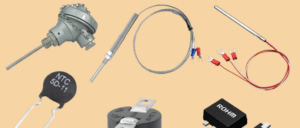Click here to register for summer batches of robotics. Click here for details of courses.
- What is transducer? What are the selection criteria of transducer?
- What is thermistor? How it is used in Wheatstone Bridge?
- What is Light Dependent Resistor (LDR)? Explain with diagram
- How capacitive transducer works? Explain with diagram
- How Linear Variable Differential Transformer works? Explain its three cases
- How Piezo Electric Crystal works? What are the different axes of crystal?
Introduction
Before discussing about what is transducer, first we shall see its definition. A transducer is a device which converts one form of energy into another form. There are two types of transducers: active transducer and passive transducer.
The active transducer generates its own electrical voltage during conversion. Thus, it does not require any battery supply for conversion (e.g. solar cell, thermocouple etc.). In passive transducer, it requires external battery supply. It only changes its parameter during conversion like change in resistance or capacitance etc. (e.g. LDR, thermistor etc.)
Active & Passive Transducers
Active transducers: It is defined as a device, which generates its own electrical voltage during conversion of one form of energy into another. It does not require any external battery supply for its working, for example, solar cell, piezo electric crystal etc.
Passive transducers: It is defined as the device, which requires external battery voltage to operate because it only changes its parameter like change in resistance or capacitance during conversion, for example, light dependant resistor, thermister etc.
Classification of Transducers
There are different types of transducers classified as follows –
- Microphone: It is a transducer which converts sound energy into electrical energy.
- Solar Cell: It converts light energy into electrical energy.
- Quartz Crystal: It converts pressure into electrical energy and opposite also.
- Thermocouple: It converts heat into electrical energy.
- Speaker: It is transducer which converts electrical energy into sound energy.
- Thermister: It converts heat into resistance.
- Light Dependant Resistor: It converts light into resistance.
- Galvanometer: It converts electrical energy into mechanical energy i.e. deflection.
- Strain Gauge: It converts strain into electrical energy.
Selection of transducer
Following factors must be considered while selecting transducer for a measurement system –
Type of Transducer: While selecting transducer, you must know which physical quantity you are measuring, like pressure, intensity, displacement, speed, heat, light, etc.
Range of Transducer: Range of quantity like pressure (0-10N), brightness of light (0-200 candela), temperature (-100°C to 200°C), etc. So according to range a particular transducer can be selected.
Specifications of Transducer: While using the transducer its specifications are important. For example, we must think about its physical aspects like size, shape, package, type, diameter, height, weight.
We must also think about its sensitivity, accuracy, response time (conversion speed), ambient temperature tolerance, reliability, linear relationship between input and output.
And finally it must economical.




Very nice explanation sir.
Thank you for the one stop solution on the net through your website.